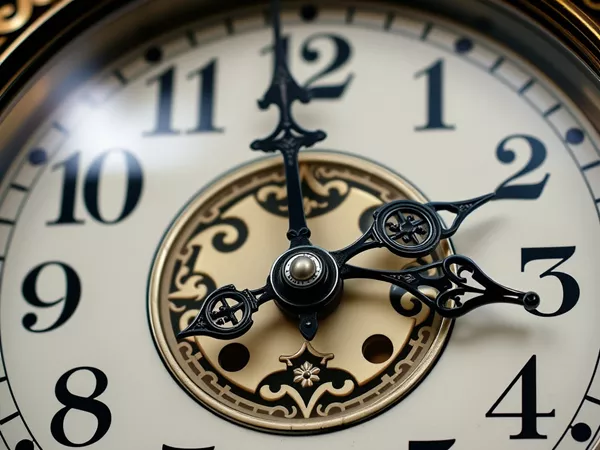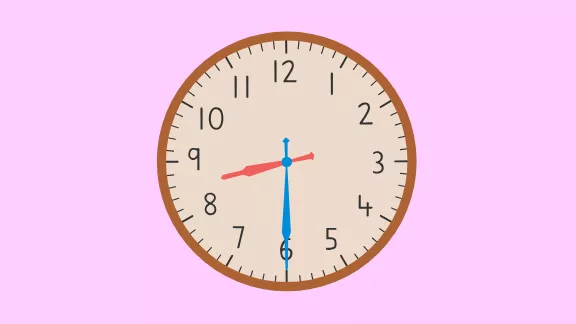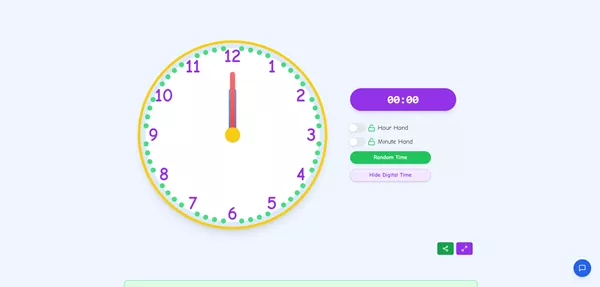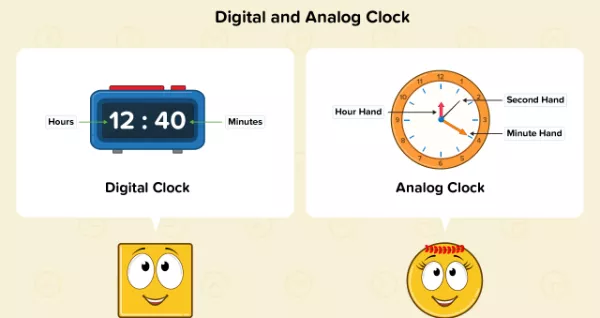Mastering the Analog Clock: A Comprehensive Guide to Reading and Understanding Time
Understanding the Analog Clock – What It Is and Why It Matters
Analog clocks, with their sweeping hands and numbered faces, may seem like relics of the past in our increasingly digital world. However, understanding how to read an analog clock remains a crucial skill, offering cognitive benefits and practical advantages in various aspects of life. This comprehensive guide is designed to help teachers, parents, and students alike master the art of reading and understanding time on an analog clock. More importantly, it will guide you to our interactive analog clock tool, a fun and effective way to learn!
This article aims to:
- Explain the fundamental components of an analog clock.
- Provide step-by-step instructions on how to read an analog clock accurately.
- Highlight common mistakes and offer tips to avoid them.
- Offer guidance on teaching children how to read analog clocks effectively.
- Emphasize the continued relevance of analog clocks in the modern age.

What is an Analog Clock?
An analog clock is a type of clock that displays time using hands that rotate around a circular face. Unlike digital clocks, which show the time numerically, analog clocks offer a visual representation of time's passage.

Analog Clock Features
A typical analog clock features:
- Clock Face: The circular surface with numbers 1 to 12 marking the hours. Some clocks use Roman numerals or simple markers instead.
- Hour Hand: The shorter hand that indicates the hour.
- Minute Hand: The longer hand that indicates the minutes.
- Second Hand (Optional): A thin hand that indicates the seconds. Our interactive clock focuses on hours and minutes for ease of learning.
History and Functionality
Analog clocks have a rich history, dating back to ancient civilizations. They evolved from sundials and water clocks and have been refined over centuries to become the sophisticated timekeeping devices we know today. While digital clocks have gained popularity, analog clocks remain valued for their aesthetic appeal and the intuitive way they represent the passage of time.
How to Read an Analog Clock
Reading an analog clock requires understanding the relationship between the hands and the numbers on the clock face. Here's a step-by-step guide:

Understanding Clock Divisions
The clock face is divided into 12 sections, each representing an hour. Each hour section is further divided into five-minute intervals, marked by small lines or dots.
Hour, Minute, and Second Hands
- Hour Hand: The hour hand moves slowly, completing one full rotation in 12 hours. It points directly at the hour when it's exactly on the hour mark.
- Minute Hand: The minute hand moves faster, completing one full rotation in 60 minutes. Each number on the clock face represents 5 minutes (e.g., 1 represents 5 minutes, 2 represents 10 minutes, and so on). To determine the minutes, multiply the number the minute hand points to by 5.
- Second Hand: The second hand (if present) moves the fastest, completing one full rotation in 60 seconds.
Example:
Let's say the hour hand is pointing directly at the 2 and the minute hand is pointing at the 6. This means the time is 2:30 (2 hours and 30 minutes).
Common Mistakes When Reading an Analog Clock
Even with a clear understanding of the basics, some common mistakes can occur when reading analog clocks, especially for beginners.
Confusing AM/PM
Analog clocks typically display time in a 12-hour format, which requires distinguishing between AM (ante meridiem, before noon) and PM (post meridiem, after noon). Pay attention to the context of the situation to determine whether it's AM or PM.
Misinterpreting Hands
A frequent error is mistaking the hour hand for the minute hand, or vice versa. Remember that the hour hand is shorter and moves more slowly, while the minute hand is longer and moves more quickly.
Teaching Children to Read Analog Clocks
Teaching children to read analog clocks can be a rewarding experience. Here's a structured approach:
Step-by-Step Approach
- Start with the Hour Hand: Focus on teaching children to identify the hour first. Explain that the hour hand points to the hour.
- Introduce the Minute Hand: Once they understand the hour, introduce the minute hand. Explain that each number represents 5 minutes.
- Practice Together: Use a practice clock or our analog clock game to practice reading the time together. Start with simple times like "3:00" or "6:30" and gradually increase the complexity.
Fun Activities to Reinforce Learning
- Time Bingo: Create bingo cards with different times and have children mark them off as you call them out.
- Clock Matching Game: Match analog clock faces with corresponding digital times.
- "What Time Is It?" Scavenger Hunt: Hide clocks around the house and have children find them and read the time.

Why Analog Clocks Still Matter
Despite the prevalence of digital timekeeping devices, analog clocks continue to hold value in the modern world.
Cognitive Benefits
Reading an analog clock engages spatial reasoning skills and helps develop a deeper understanding of time as a continuous concept. It encourages children to think about the relationship between hours and minutes in a visual and intuitive way.
Practical Uses in Daily Life
Analog clocks can be found in various settings, from classrooms and offices to public spaces and homes. Understanding how to read them remains a valuable skill for navigating daily life.
Military Time vs. Analog Time
While not always immediately relevant for children, understanding the relationship between analog time and military time can be a useful extension of their knowledge.
Understanding Military Time
Military time, also known as 24-hour time, eliminates the need for AM and PM designations. Hours are numbered from 0000 (midnight) to 2359 (11:59 PM).
Analog Clocks in Military Use
Although military personnel primarily use digital displays for precision, understanding analog time is still valuable for situations where analog clocks are present or for historical context.
Recap of the Importance of Analog Clocks
Mastering the analog clock is a valuable skill that offers cognitive benefits and practical advantages. By understanding the components of an analog clock and following a structured approach to learning, children and adults alike can confidently read and understand time. Don't forget to explore our free online test to assess your skills!

We encourage you to explore our interactive analog clock tool on our website. It provides a hands-on learning experience that can significantly enhance your understanding of time and make learning fun!
FAQ Section:
Q: What does 12:30 look like on an analog clock?
A: The hour hand will be halfway between the 12 and the 1, while the minute hand will point directly at the 6.
Q: Why are analog clocks divided into 12 hours?
A: This is a historical convention tracing back to ancient civilizations. Twelve was a convenient number for dividing the day.
Q: How do I teach my child to read an analog clock?
A: Start with the hour hand, then introduce the minute hand. Use our interactive analog clock and games for a fun learning experience.
Q: What is the difference between an analog clock and a digital clock?

A: An analog clock uses hands to display time, while a digital clock displays time numerically.
Q: Are analog clocks becoming obsolete in the digital age?
A: While digital clocks are prevalent, analog clocks still offer cognitive benefits and are appreciated for their aesthetic appeal and intuitive representation of time. Furthermore, our interactive analog time tool brings the traditional clock into the digital age, offering a unique learning experience.